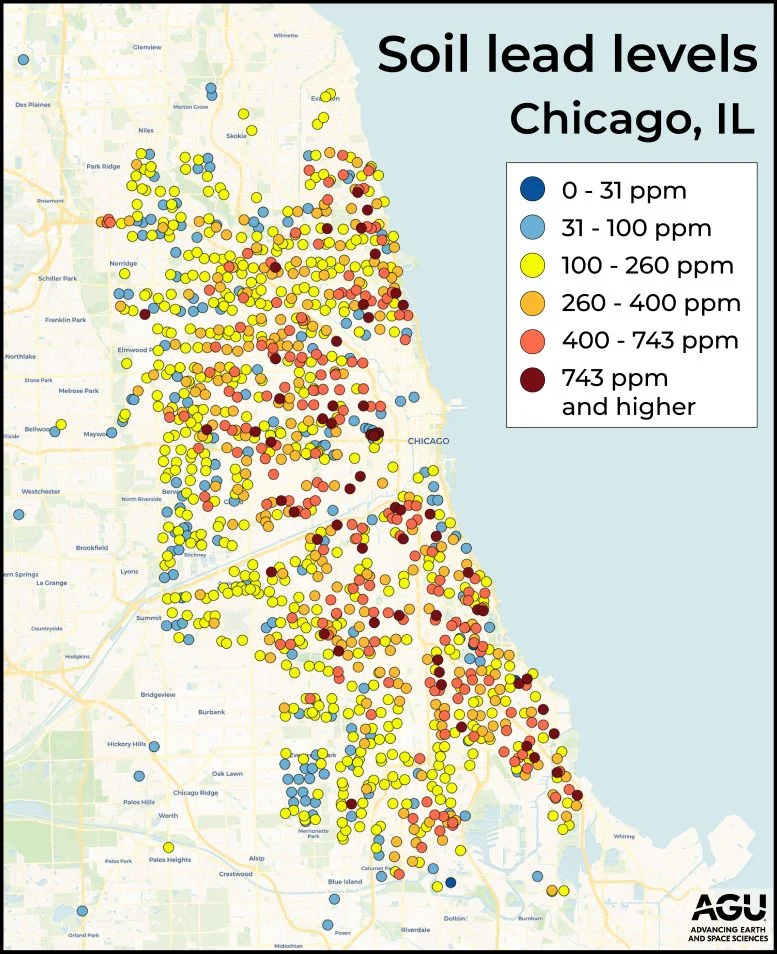
Contamination of lead is sited, therefore, at the very nexus of public health, environmental justice, and economic considerations. Remediation for this pervasive problem through traditional means is going to be very expensive—projected at over $1 trillion to address the approximately 29 million affected households across the United States. This clearly articulates an urgent requirement for scalable, cost-effective solutions to effectively manage the pervasive impacts of lead exposure in communities across the country.
Generation after generation, the burdens of lead contamination have fallen squarely on the poor and minority communities. This is symptomatic only of systemwide inequalities that stretch for decades of discriminatory practices such as redlining that boxed these communities into areas with inadequate infrastructure and heightened environmental hazards alone. The legacies live on to set the pattern for health disparities and variations in the quality of environment to stay.
This ensures that, notwithstanding, one should be able to realize fair lead contamination outcomes: equal access to funding for remediation, focused public health intervention, and meaningful community engagement. This requires that the course of action made available permits entrenching social equity in policy ahead of or at par with environmental remediation.
It is in such innovative remediation approaches to lead that lie the more promising alternatives. In soil capping, contaminated areas could be sealed off by a layer of clean soil or mulch, reducing human exposure to lead without sacrificing the ability to make use of the land. This was to be the technique—no longer simply a risk reduction measure but one to bring about long-term solutions with very minimal ecological disruption.
Another example of such an innovative approach is phytoremediation, an approach based on the inherent ability of certain plants to accumulate and detoxify contaminated soils. In this respect, techniques of cleaning polluted sites in an environmentally friendly way simultaneously improve biodiversity and the health of ecosystems; hence, they turn into a preferred choice, at least in the case of high ecological sensitivity sites.
THERE IS GATHERING MOMENTUM BEHIND PROACTIVE INTERVENTION AND POLICY REFORM FOR LEAD CONTAMINATION, AN ISSUE SO PREVALENT. Federal or state agencies, with grassroots activities through organizations and advocacy groups, provide the lead in activities designed to bring attention to and set standards for safety, while also providing funding to drive further remediation efforts. That is where collaborative efforts need to take place in mitigating health risks from lead exposure and ensuring that communities all across this great country are safe from harm.
A good lead contamination management plan usually comprises public education and awareness campaigns. These would not only enlighten the people and communities to be affected onto their risks but equal better application of independent measures for prevention and making the environment safe; that is, exposure reduction and protection of public health. Setting a culture of care and citizenship empowers communities to take leading roles in dealing with contamination and long-term sustainability.
This would be possible only through proactive policies, in which effective activation by the roles facing all persons involved in policy formulation and delivery—in a word, researchers, policymakers, community leaders, and active citizens—can result in policies for the remediation of contamination by lead. These major principles for remediation policies of equity, sustainability, and innovation will be the stepping stones toward safer and healthier environments with the kind of resilience needed to deal with long-term environmental challenges locally.
Any holistic solution to such complex challenges with lead contamination shall have to mobilize government agencies, private sector partners, and a local community that, by concerted efforts underpinned by scientific research and technological advancement, together with community-driven initiatives on mitigating lead exposure impacts while fostering resilient, sustainable development and communities all across the country.
The effects of lead exposure do not stop at the level of the environment, public health, and economic stability but also social justice. Invest in research, technology, and community engagement toward advancing solutions to mitigate the effect of lead exposure in promoting sustainable development and resilient communities across the country. This calls for collective action and shared responsibility against such multifaceted challenges of lead contamination.
Only then, with comprehensive efforts to untangle the myriad points at which lead contamination crosses paths with public health and environmental justice issues, can proper steps into that future be taken where the first right to a healthy and safe environment is maintained for every community. These are serious steps toward reducing lead exposure if seriously and ably undertaken through some collective work to work for a better and healthier tomorrow for generations to come.
The solution to lead contamination rests, above all, in the complex linkages among science, policy reform, community engagement, and resource allocation. By placing mitigation at the forefront with an emphasis on equity and sustainability, stakeholders most effectively would be reducing the pervasive impacts of lead exposure by ensuring that all enjoy opportunities for health and well-being through the promotion of public health and the creation of resilient communities. It is in this call to collaboration, the joining of efforts, which we can set the pathway forward to our clean and safe environments for the well-being of all.
The issue of lead contamination is very complex and requires correspondingly comprehensive solutions that ensure scientific innovation, policy reform, community empowerment, and resource equity. No stakeholder can do enough against this complex challenge for guaranteeing public health and sustainable environmental conditions for future generations unless through innovation and collaboration.

